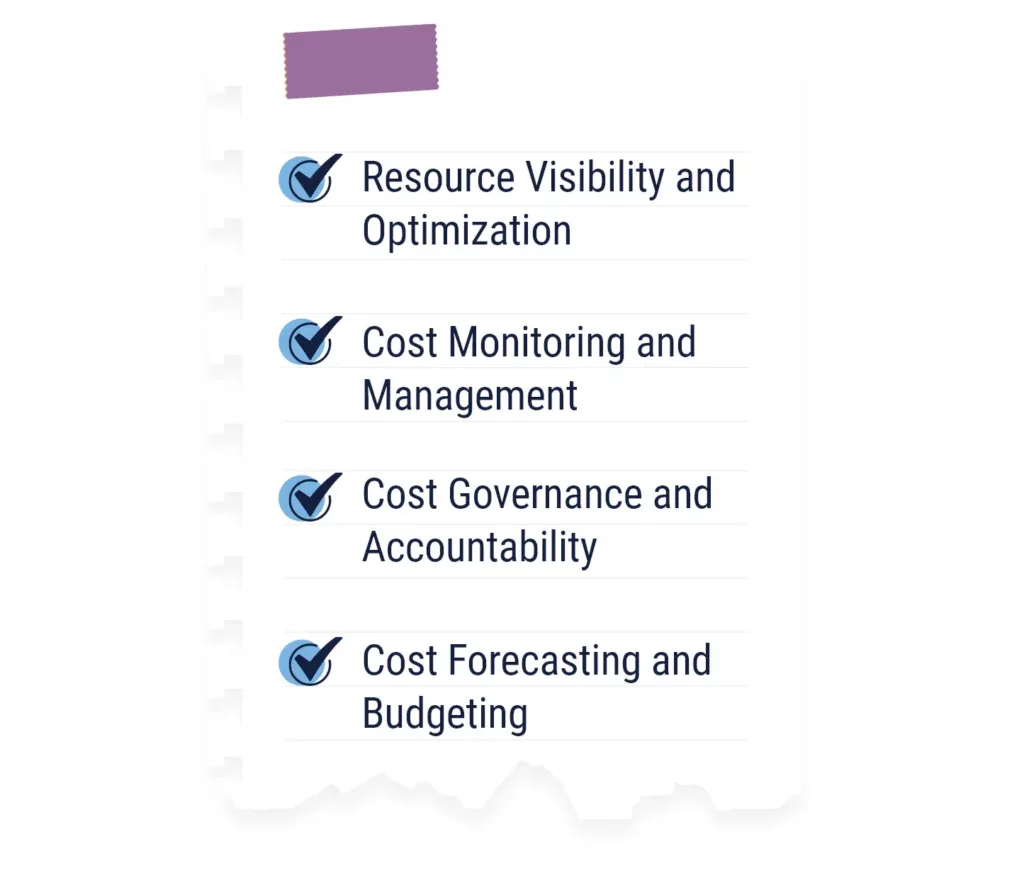
Cloud tagging is an important element to help organizations optimize cloud costs, however it is less emphasized. By implementing effective tagging strategies and following best practices, IT leaders can harness the power of cloud tagging to allocate costs accurately, track resource usage, and make informed decisions to decrease unnecessary cloud spend.
What is Cloud Tagging in Cloud Computing?

Cloud tagging is a process that involves attaching descriptive metadata or labels to cloud resources which are used to define the types of resources within a cloud environment. In cloud computing, a tag is made up of two components that add additional information and context: a key (i.e. “Environment” or “Owner”) and a more granular value (i.e. “Production” or “Cloud Architect”).
Developing and launching a proper cloud tagging strategy is an invaluable way for IT teams to tackle their cloud governance initiatives. Additionally, overall, using cloud tagging can help organizations gain better visibility and control over their resources to optimize operations, among others.
Why is Cloud Tagging Important for Optimizing Cloud Resources?
Tagging plays a crucial role in cloud cost optimization and resource optimization by providing organizations with enhanced visibility, control, and insights into their environment’s resources.
A proper cloud tagging strategy can help with the following:

Resource Visibility and Optimization
By applying tags to cloud resources, such as virtual machines (VMs) or databases, organizations gain better cloud visibility and categorization of their resources. This allows for effective resource allocation, tracking, and identification, leading to improved resource management and optimization.
Additionally, by analyzing tagged resources, organizations can identify underutilized or idle resources that are contributing to wasted cloud spend. With this visibility, IT leaders are empowered to take necessary actions to resize, scale down, or terminate improperly provisioned or unneeded resources.
Cost Monitoring and Management
Tagging plays a crucial role in cost monitoring and management by enabling organizations to track resource usage and associate costs with specific tags. After implementing strategic cloud tagging, IT leaders can make informed decisions on resource allocation and utilization thanks to the ability to more easily:
- Analyze cost patterns
- Identify expenses across cost centers (organizational units or divisions -such as specific teams, projects, departments, etc. – within a company that are responsible for incurring and managing cloud costs)
- Optimize spending
Cost Governance and Accountability
Cloud tagging also enables cost governance and accountability by linking resources to the responsible teams or owners. Tagging also allows organizations to:
- Identify and address cost anomalies
- Enforce cost control policies
- Implement accountability measures
- Gain insight into unneeded or unused software and application user licenses that may be contributing to cloud spend waste
Cost Forecasting and Budgeting
Cloud tags assist in cost forecasting and budgeting exercises. By analyzing historical cost data associated with tagged resources, organizations can project future costs more accurately, plan budgets effectively, and make informed financial decisions to better the organization.
Can You Allocate Cost Without Perfect Tags?
Allocating costs without perfect tags can be challenging but it’s still possible. For example, you can try assigning cost values or use weighted averages based on available tag information or distributing costs based on the proportion of tagged resources compared to the total resources within a specific category.
However, it would be difficult for either approach to offer accurate cost allocation guidance. With that, it’s pertinent to implement, review, and refine a strategic cloud tagging policy so you can accurately identify, accumulate, and assign costs to their respective categories.
Cloud Tagging Strategies and Best Practices
When it comes to building out your cloud tagging plan, its important to follow best practices while developing a strategy.
Establish Goals
It’s important to establish goals and develop a list of technical, business, security, and automation goals and objectives for cloud tagging. Here are just a few cloud tagging goals to keep in mind:
- Reduce time needed to debug
- Track cost allocation
- Enforce controls access
- Increase efficiency
When you begin outlining a cloud tagging plan, it’s not only important to define your goals – it’s also crucial to map out metrics for each goal so you can accurately measure the success of your cloud tagging strategy.
Define Access Controls for Security Measures
Tags can be used to define access controls, apply security policies, and ensure proper data protection. Tagging resources based on their sensitivity, compliance requirements, or risk levels allows IT teams to implement targeted security measures that mitigate security risks, enforce compliance standards, and improve the organization’s overall security posture.
Build Your Policy
Once you’ve established your goals, you can begin defining your tagging policy and build an overall plan to serve as a roadmap for consistent and effective tagging. Your plan should include general elements, such as:
- Defined categories, keys, and values
- A standardized tagging naming convention
- Roles and responsibilities of stakeholders
- Consistent formatting
- Guidelines for assigning tags
- Guidelines for adoption
Before fully implementing your policy, be sure to run tests to ensure things will go according to plan.
Implement and Distribute Tagging Policy
Once you’ve created and tested your tagging policy, it’s time to implement and share your plan with relevant stakeholders. If needed, schedule training sessions to ensure the teams working within your cloud environment understand the importance of correctly following your organization’s cloud tagging plan.
Incorporate Automation into the Tagging Process
Tags can be used to schedule and trigger automation workflows, helping streamline provisioning, scaling, and decommissioning processes, leading to improved operational efficiency and reduced manual intervention.
Most cloud providers have made building automation into the tagging process fairly seamless as users can leverage their proprietary tools or integrate applicable third-party public cloud tools, such as CloudCheckr.
For example, in AWS, you can utilize AWS tagging APIs, AWS CloudFormation, or infrastructure-as-code tools like AWS Cloud Development Kit (CDK) for automation. Microsoft Azure also offers Azure Automation and Logic Apps that can be leveraged to automate the tagging process.
Audit, Update, and Remove Tags
Once you’ve implemented your tagging plan, it’s crucial to set aside time to routinely audit your tags. Why? Auditing your tags is necessary to maintaining tag compliance and improving resource visibility, among others. Regular review ensures that tagging practices continue to align with organizational policies and goals.
During your review, update any tags that may not align with current or future goals, and remove any tags that are unneeded.
Document as Much as Possible
Maintaining consistent documentation during and after the implementation process is important to ensure:
- Accurate knowledge transfer and training: Proper documentation can help ensure that new team members or other stakeholders working with tagged resources understand the organization’s tagging guidelines, conventions, and objectives.
- Policy improvements: Regular documentation provides a foundation for evaluating the effectiveness of the cloud tagging policy and helps identify areas for improvement. These records can be periodically reviewed and analyzed by IT leaders who can then update the organization’s tagging policy accordingly.
- Compliance and auditing: Maintaining documentation of the tagging policy also provides evidence of compliance and validates that tagging practices align with organizational policies, regulatory requirements, or industry best practices.
How a Managed Service Provider Help
A managed cloud provider, like TierPoint, can offer expert advice and help with the tools you need to effectively optimize your cloud spend. At TierPoint, our Azure and AWS architects are an available for consultation to understand your cloud tagging needs and the goals you seek to accomplish, as well as assist in tag implementation.
Ready to harness your cloud’s full potential? Download our eBook and discover how to recognize and conquer common challenges that lead to a bloated cloud spend.

FAQs
Cloud tags in AWS are key-value pairs that provide additional information about resources, such as their purpose, ownership, environment, or cost center. Tags can be applied to various AWS resources, like EC2 instances, S3 buckets, RDS databases, and more.
Cloud tagging refers to the practice of assigning metadata attributes (tags) to Microsoft Azure resources. Azure provides tools and APIs that allow for the creation, assignment, and management of tags across resources.
The top challenges of cloud tagging include organizational consistency, tag maintenance and evolution, and tag complexity.
